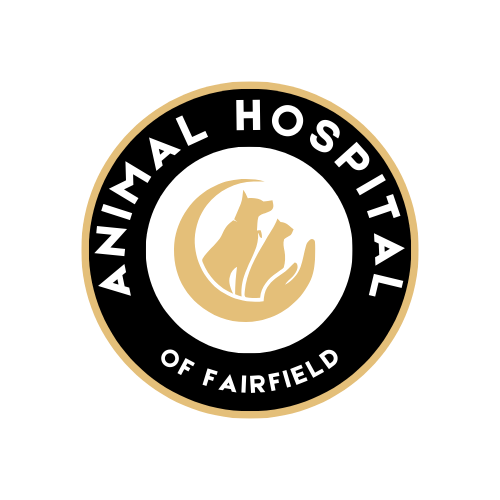List of Services
-
Total hip replacement (THR)List Item 2
Total Hip Replacement (THR) is a surgical procedure designed to replace a damaged or diseased hip joint in pets, typically due to conditions like hip dysplasia, arthritis, or trauma. During the procedure, the entire hip joint—comprising the ball (femoral head) and socket (acetabulum)—is replaced with a prosthetic implant, allowing for pain relief, improved mobility, and a better quality of life. Our skilled veterinary team uses advanced surgical techniques and high-quality implants to ensure optimal results. With the support of a tailored rehabilitation plan, pets can recover effectively, regaining their strength and freedom of movement after surgery.
-
Femoral Head and Neck Ostectomy (FHO)List Item 1
Femoral Head and Neck Ostectomy (FHO) is a surgical procedure used to treat hip joint pain caused by conditions like hip dysplasia, fractures, or arthritis. The surgery involves removing the head and neck of the femur bone, which eliminates painful bone-on-bone contact in the hip joint, providing significant pain relief. This procedure is often recommended for pets, especially in cases where total hip replacement (THR) may not be suitable. Following the surgery, the body forms a false joint where the femur and pelvis meet, allowing for improved mobility and a pain-free lifestyle. Our experienced veterinary team carefully performs this procedure to ensure a smooth recovery and a better quality of life for your pet.
-
Double or Triple Pelvic Osteotomy (DPO or TPO)List Item 3
Double or Triple Pelvic Osteotomy (DPO or TPO) are advanced surgical procedures used to treat hip dysplasia in young pets, typically before they experience significant arthritis or joint degeneration. These surgeries involve cutting the pelvis bone in two or three places and repositioning it to improve the alignment of the hip joint, creating a more stable and functional joint. By improving the fit of the ball and socket, these procedures help reduce pain, prevent further damage, and promote normal joint function. DPO and TPO are ideal for young, active animals with hip dysplasia, offering them the opportunity to develop a strong, healthy hip joint as they grow. Our skilled veterinary surgeons perform these surgeries with precision to ensure the best possible outcomes and long-term mobility for your pet.
-
Juvenile Pubic Symphysiodesis (JPS)List Item 4
Juvenile Pubic Symphysiodesis (JPS) is a preventive surgical procedure used to treat hip dysplasia in young animals, typically performed before the age of 5 months. During the procedure, the pelvic bones are carefully fused together at the pubic symphysis, which alters the growth of the pelvis and helps create a more stable hip joint. By adjusting the alignment of the pelvis early in life, JPS can reduce the risk of developing hip dysplasia and prevent further joint instability as the animal grows. This minimally invasive surgery offers young pets the opportunity to develop a healthier, more functional hip joint, improving their long-term mobility and quality of life. Our experienced veterinary surgeons use advanced techniques to ensure the best outcomes for your pet’s hip health.
-
Open Reduction and Internal Fixation (ORIF)
Open Reduction and Internal Fixation (ORIF) is a surgical procedure used to treat hip fractures by repositioning the fractured bone and stabilizing it with screws, pins, or plates. This surgery allows the bone to heal in the proper alignment, restoring function and reducing pain. ORIF is typically recommended for fractures that are displaced or cannot heal properly without surgical intervention. The procedure ensures that the bones remain securely in place during the healing process, providing long-term stability and improving the chances of a full recovery. Our experienced veterinary surgeons utilize advanced techniques to ensure precise bone alignment and a smooth healing process, helping your pet return to normal activity as quickly as possible.
We are certified in TTA, TPLO, and Total Hip replacements by the inventors of the techniques - www.Kyon.ch

Common types of hip surgeries:
- Total hip replacement (THR): This surgery involves removing the damaged hip joint and replacing it with a prosthetic hip joint. The prosthetic joint is typically made of metal, plastic, or ceramic materials.
- Femoral head and neck ostectomy (FHO): This surgery involves removing the head and neck of the femur bone, which eliminates the painful bone-on-bone contact in the hip joint. The body eventually forms a false joint to help support the weight of the animal.
- Double or triple pelvic osteotomy (DPO or TPO): These surgeries involve cutting the pelvis bone and repositioning it to create a more stable hip joint. These surgeries are typically performed on young animals with hip dysplasia.
- Juvenile pubic symphysiodesis (JPS): This surgery involves fusing the pelvic bones together to create a more stable hip joint. This surgery is typically performed on young animals before the age of 5 months.
- Open reduction and internal fixation (ORIF): This surgery involves repositioning a hip fracture and using screws, pins, or plates to hold the bone in place while it heals.
It’s important to note that hip surgery is a major procedure and may not be the best option for all pets with hip dysplasia. It’s important to consult with a veterinarian to determine the best course of treatment for your pet’s specific needs.





